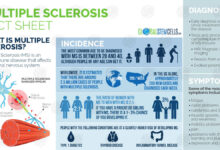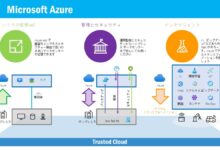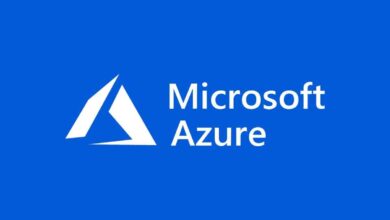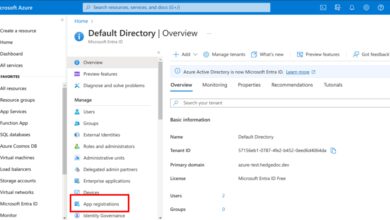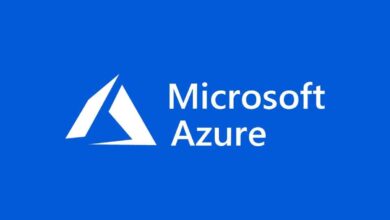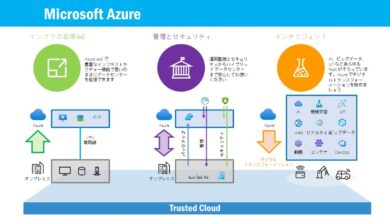Sign In to Azure: 7 Powerful Steps to Master Access Instantly
Getting started with cloud computing often begins with one crucial step: sign in to Azure. Whether you’re an IT pro, developer, or business owner, accessing Microsoft’s powerful cloud platform is your gateway to innovation, scalability, and security. Let’s break down everything you need to know.
Sign In to Azure: Understanding the Basics
/getty_signs-56af94d63df78cf772c66a19.jpg?w=1200)
Before diving into advanced configurations, it’s essential to understand what signing in to Azure actually means. It’s not just about logging into a website—it’s about authenticating your identity to access a vast ecosystem of cloud services, resources, and management tools.
What Does ‘Sign In to Azure’ Mean?
When you sign in to Azure, you’re using your Microsoft account or work/school account (Azure Active Directory) to gain access to the Azure portal. This portal is the central hub where you manage virtual machines, databases, AI models, networking, and more.
- Authentication is handled via Azure Active Directory (Azure AD).
- You can access Azure through portal.azure.com.
- Each login grants access based on assigned roles and permissions.
“Signing in to Azure is the first step toward unlocking enterprise-grade cloud capabilities.” — Microsoft Azure Documentation
Different Types of Azure Accounts
Not all Azure accounts are the same. The type of account you use determines your access level, billing structure, and administrative control.
- Personal Microsoft Account: Used for individual use, often linked to Outlook.com or Hotmail.
- Work or School Account: Managed by an organization through Azure AD, used in enterprise environments.
- Guest User Account: External collaborators invited into your Azure environment.
Choosing the right account type ensures proper access and compliance with organizational policies.
How to Sign In to Azure: Step-by-Step Guide
Now that we understand the foundation, let’s walk through the actual process of how to sign in to Azure. This guide applies whether you’re a new user or returning after a break.
Step 1: Navigate to the Azure Sign-In Page
Open your preferred web browser and go to https://portal.azure.com. This is the official entry point for the Azure portal. Avoid third-party links to prevent phishing risks.
- Ensure the URL is correct and secure (HTTPS).
- Bookmark the page for future access.
- Use modern browsers like Chrome, Edge, or Firefox for best compatibility.
Step 2: Enter Your Credentials
Type in your email address associated with your Microsoft or organizational account. After clicking ‘Next’, you’ll be prompted to enter your password.
- If using a work account, your domain might auto-detect (e.g., @company.com).
- Passwords are case-sensitive; ensure Caps Lock is off.
- Use a password manager to avoid typos and enhance security.
Step 3: Complete Multi-Factor Authentication (MFA)
For added security, most organizations require MFA. You may receive a notification via the Microsoft Authenticator app, a text message, or a phone call.
- Approve the prompt on your mobile device.
- If using an authenticator app, enter the 6-digit code.
- Backup methods include email or alternate phone numbers.
“Over 99.9% of account compromises can be prevented with multi-factor authentication.” — Microsoft Security Report
Once verified, you’ll be redirected to the Azure dashboard.
Common Issues When Trying to Sign In to Azure
Even with a straightforward process, users often encounter obstacles when attempting to sign in to Azure. Understanding these issues helps reduce downtime and frustration.
Forgot Password or Locked Account
One of the most frequent problems is forgetting your password or getting locked out due to multiple failed attempts.
- Click ‘Forgot password?’ on the login screen.
- Follow the recovery steps using your recovery email or phone.
- Administrators can reset passwords via Azure AD portal.
Organizations should set up self-service password reset (SSPR) to empower users.
Incorrect Tenant or Subscription Selection
Users with access to multiple tenants or subscriptions may accidentally log into the wrong environment.
- Check the top-right corner of the portal to see which directory you’re in.
- Use the directory switcher to change contexts.
- Pin frequently used subscriptions for easier navigation.
This is especially critical for consultants or IT staff managing multiple clients.
Browser or Cache-Related Errors
Sometimes, the issue isn’t with credentials but with the browser itself.
- Clear cookies and cache regularly.
- Try incognito/private browsing mode.
- Disable browser extensions that may interfere with authentication.
If problems persist, try a different browser or device.
Security Best Practices When You Sign In to Azure
Every time you sign in to Azure, you’re accessing potentially sensitive data and infrastructure. Securing this access is non-negotiable.
Enable Multi-Factor Authentication (MFA)
MFA adds a second layer of verification beyond just a password. It dramatically reduces the risk of unauthorized access.
- Enforce MFA for all users, especially administrators.
- Use phishing-resistant methods like FIDO2 security keys.
- Configure MFA through Azure AD Conditional Access policies.
Learn more at Microsoft’s MFA documentation.
Use Conditional Access Policies
Conditional Access allows you to define rules that control when and how users can sign in.
- Block sign-ins from untrusted locations or devices.
- Require compliant devices for access.
- Enforce MFA for high-risk scenarios.
“Conditional Access is the cornerstone of Zero Trust security in Azure.” — Microsoft Azure Security Guide
These policies are configured under Azure AD > Security > Conditional Access.
sign in to azure – Sign in to azure menjadi aspek penting yang dibahas di sini.
Monitor Sign-In Activity
Regularly review who is signing in and from where. Azure provides detailed sign-in logs for auditing and threat detection.
- Access logs via Azure AD > Monitoring > Sign-in logs.
- Filter by user, app, status, or IP address.
- Set up alerts for suspicious activities like sign-ins from unusual locations.
Integration with Microsoft Defender for Cloud enhances threat visibility.
Advanced Methods to Sign In to Azure
Beyond the standard web portal, there are several advanced ways to sign in to Azure, especially useful for developers and automation tasks.
Using Azure CLI to Sign In
The Azure Command-Line Interface (CLI) allows you to manage resources from your terminal.
- Install Azure CLI from learn.microsoft.com.
- Run
az loginin your terminal. - A browser window will open for authentication.
For service principals, use az login --service-principal with credentials.
Signing In via Azure PowerShell
Azure PowerShell is ideal for Windows administrators and scripters.
- Install the Az module using
Install-Module -Name Az. - Run
Connect-AzAccountto start the login process. - Supports MFA and certificate-based authentication.
This method is perfect for automating repetitive tasks.
Programmatic Access Using Service Principals
For applications and CI/CD pipelines, service principals provide secure, non-interactive access.
- Create a service principal in Azure AD.
- Assign roles using Role-Based Access Control (RBAC).
- Use client ID and secret (or certificate) to authenticate.
This approach is essential for DevOps workflows and cloud-native apps.
Managing Multiple Azure Subscriptions
Many users have access to more than one Azure subscription—whether for different projects, departments, or clients. Managing them efficiently starts with proper sign-in and context switching.
Viewing and Switching Subscriptions
After signing in, you might not see all your subscriptions by default.
- In the Azure portal, click your account name in the top-right.
- Select ‘Switch Directory’ or ‘Change Directory’ to access other tenants.
- Use the subscription filter in the portal’s top menu.
In CLI or PowerShell, use az account list or Get-AzSubscription to view available subscriptions.
Setting a Default Subscription
To avoid confusion, set a default subscription for your tools.
- In Azure CLI:
az account set --subscription "Subscription Name". - In PowerShell:
Select-AzSubscription -SubscriptionName "Name". - This ensures commands run in the correct context.
Default subscriptions streamline operations and reduce errors.
Sign In to Azure from Mobile Devices
Accessing Azure on the go is possible with the Microsoft Azure app, available on iOS and Android.
Downloading and Installing the Azure App
The Azure mobile app lets you monitor resources, receive alerts, and manage services from your phone.
- Download from the App Store or Google Play.
- Search for ‘Microsoft Azure’ to find the official app.
- Ensure your device meets minimum OS requirements.
The app supports biometric login (Face ID, fingerprint) for faster, secure access.
Navigating the Mobile Interface
While not as full-featured as the desktop portal, the mobile app offers key functionalities.
- View resource health and performance metrics.
- Restart virtual machines or scale services.
- Approve workflow requests or MFA prompts.
It’s ideal for quick checks and emergency responses.
Integrating Single Sign-On (SSO) for Seamless Access
For enterprises with multiple cloud apps, setting up SSO simplifies the process to sign in to Azure and other platforms with one set of credentials.
What Is Single Sign-On (SSO)?
SSO allows users to authenticate once and gain access to multiple applications without re-entering credentials.
- Reduces password fatigue and improves user experience.
- Enhances security by centralizing authentication.
- Supported via SAML, OAuth, or OpenID Connect.
Azure AD acts as an identity provider for SSO integration.
sign in to azure – Sign in to azure menjadi aspek penting yang dibahas di sini.
Configuring SSO for Azure
Organizations can enable SSO for Azure and third-party apps through the Azure portal.
- Go to Azure AD > Enterprise Applications.
- Select an app and configure single sign-on settings.
- Upload metadata or configure manually based on the app’s requirements.
SSO is especially valuable in hybrid environments with on-premises and cloud systems.
Troubleshooting Persistent Login Issues
Even after following best practices, some users face recurring login problems. Let’s explore deeper troubleshooting techniques.
Checking Azure Service Health
Sometimes, the issue isn’t on your end but with Microsoft’s infrastructure.
- Visit the Azure Service Health dashboard.
- Check for ongoing incidents in your region.
- Subscribe to alerts for real-time updates.
Downtime is rare but possible—always verify service status first.
Using InPrivate/Incognito Mode
As mentioned earlier, browser extensions or cached data can interfere with login flows.
- Open an InPrivate (Edge) or Incognito (Chrome) window.
- Try signing in again without extensions.
- If successful, clear cache or disable conflicting add-ons.
This is a quick diagnostic step before deeper investigation.
Contacting Azure Support
If all else fails, reaching out to Microsoft Support is the next step.
- Premium, Standard, and Developer support plans include technical assistance.
- Use the Help + Support blade in the Azure portal.
- Provide sign-in error codes and screenshots for faster resolution.
Support engineers can analyze backend logs to identify root causes.
How do I reset my Azure password?
If you’re using a Microsoft account, go to account.live.com/password/reset to reset your password. For work or school accounts, your administrator must reset it via the Azure AD portal or enable self-service password reset (SSPR) for users.
Can I sign in to Azure without MFA?
While possible in some test environments, Microsoft strongly recommends enabling MFA for all users. Administrators can bypass MFA using trusted IPs or named locations, but this should be done cautiously and only in secure networks.
Why can’t I see my subscription after signing in?
This usually happens due to incorrect directory selection or lack of permissions. Check the directory in the top-right corner of the portal and switch if needed. If you still can’t see it, contact your subscription administrator to verify your access role.
Is it safe to sign in to Azure on public Wi-Fi?
It’s not recommended. Public networks are vulnerable to eavesdropping. If you must access Azure on public Wi-Fi, use a trusted VPN and ensure MFA is enabled. Avoid saving credentials on shared devices.
What is the difference between Azure AD and Microsoft Account?
Azure AD is an enterprise identity service used by organizations to manage users, apps, and access. A Microsoft Account is a personal account for services like Outlook, Xbox, or OneDrive. While both can be used to sign in to Azure, Azure AD offers advanced management and security features for businesses.
Signing in to Azure is more than just a login—it’s the gateway to a world of cloud innovation. From basic access to advanced automation, understanding how to securely and efficiently authenticate is crucial. Whether you’re a beginner or an expert, following best practices like enabling MFA, monitoring sign-ins, and using secure methods ensures your cloud journey is both productive and protected. Stay updated with Microsoft’s documentation and leverage tools like Conditional Access and SSO to streamline your workflow. The cloud is powerful—make sure your access is too.
sign in to azure – Sign in to azure menjadi aspek penting yang dibahas di sini.
Further Reading:


